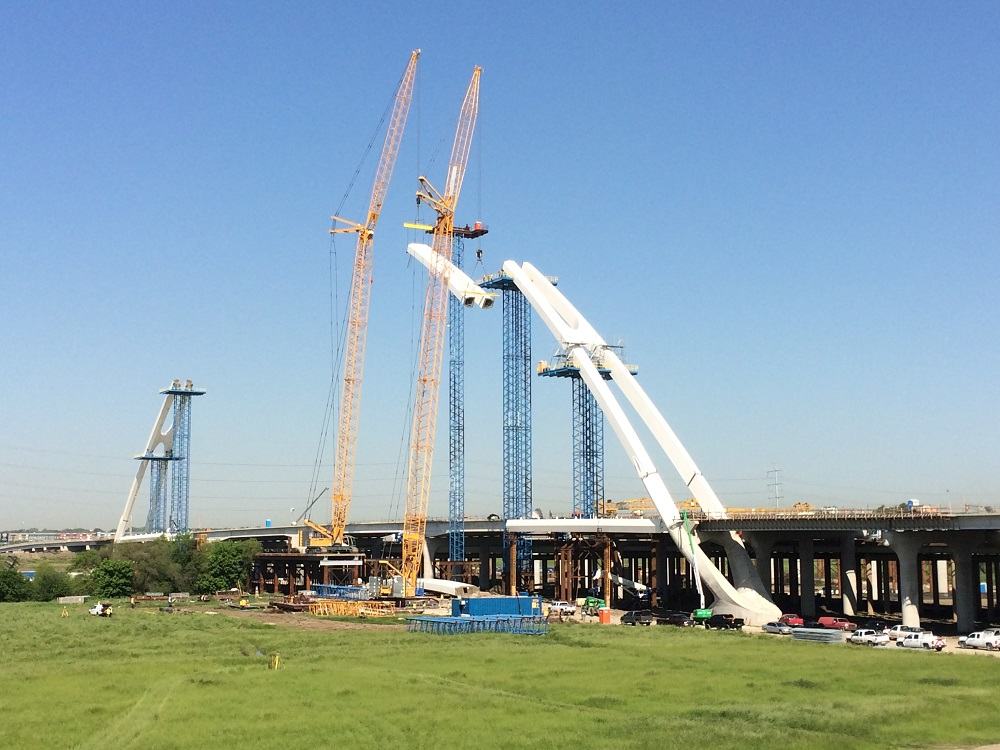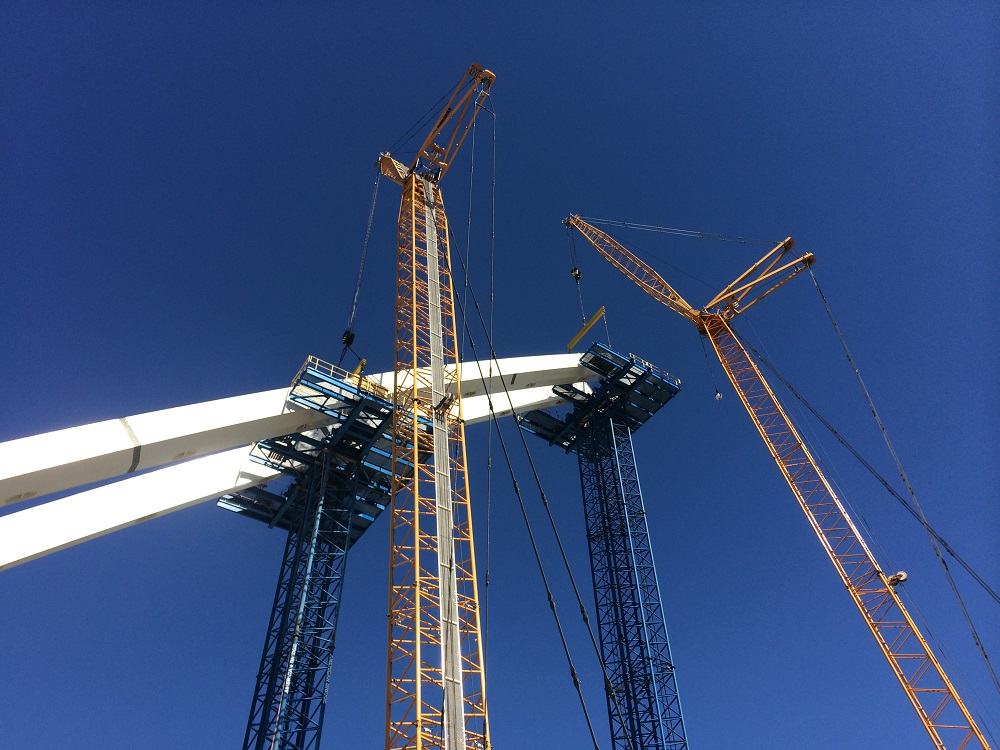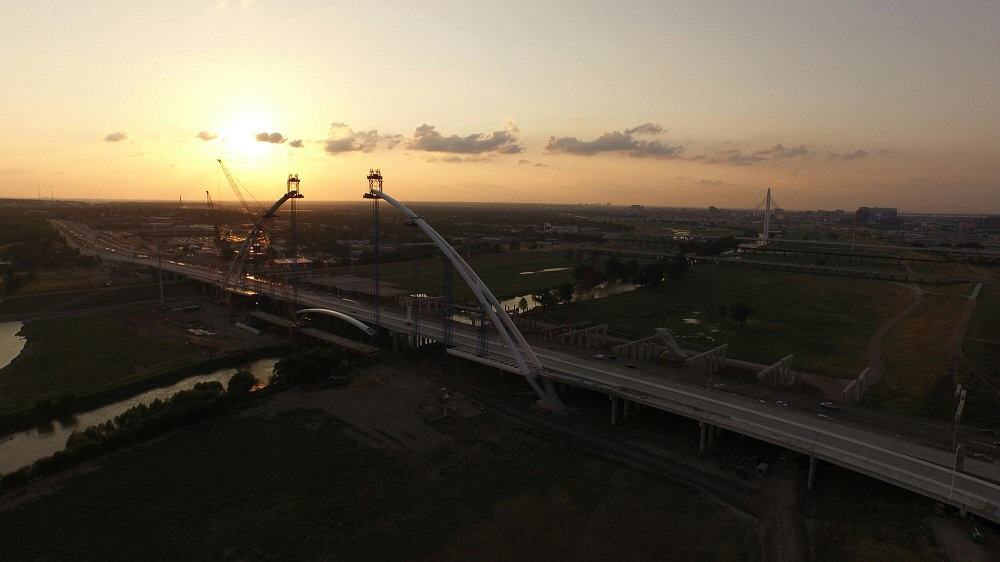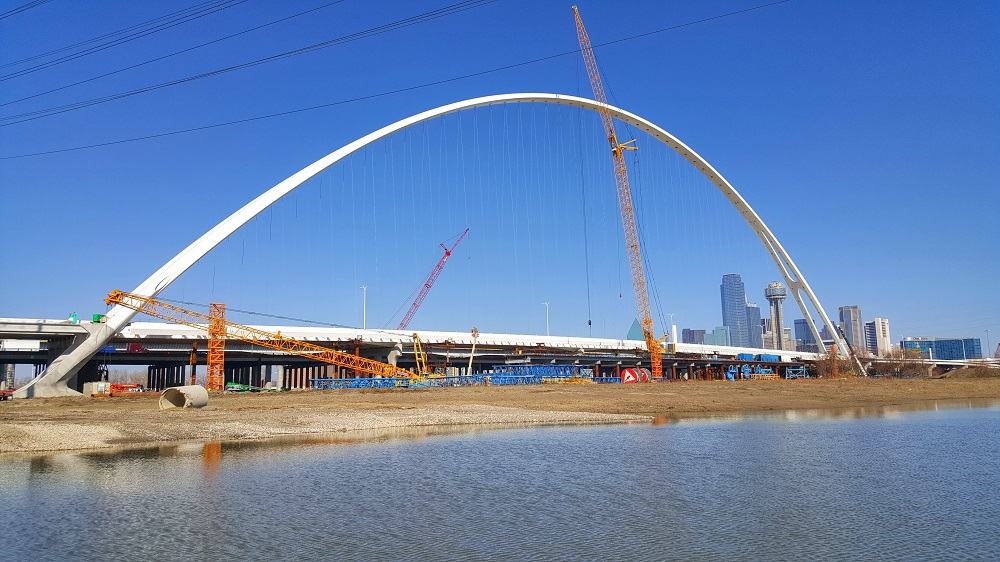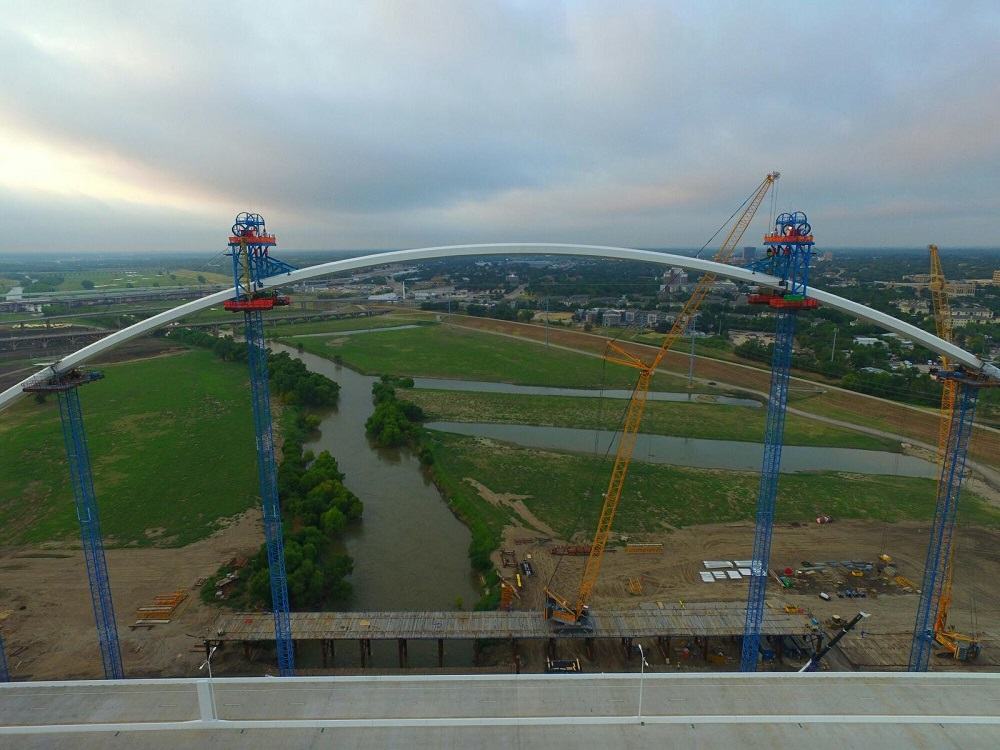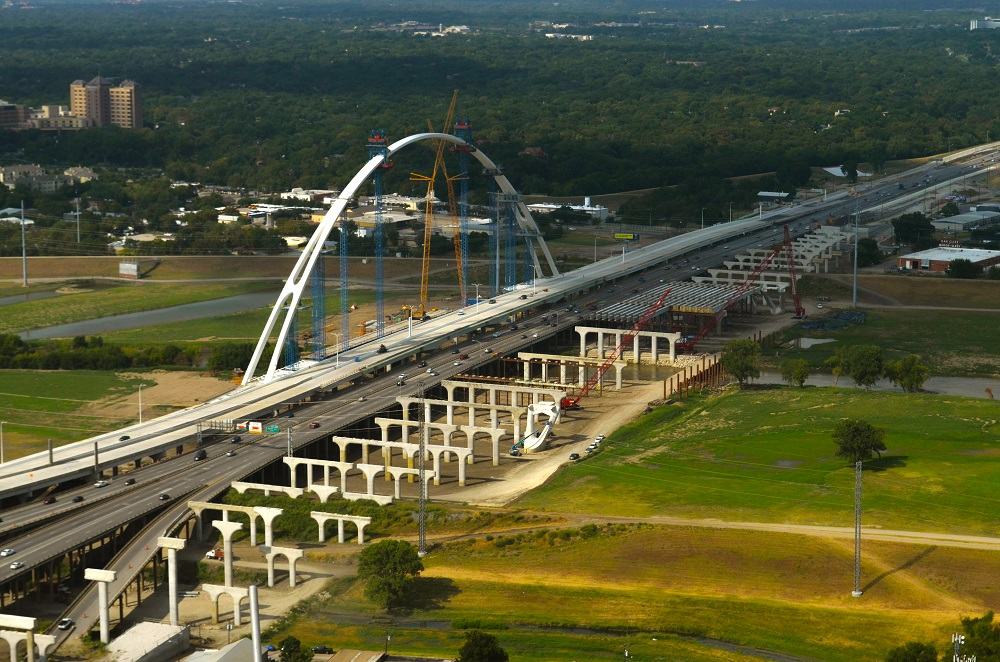Working as a subcontractor to Pegasus Link Constructors, American Bridge is responsible for the construction of twin 1,125-foot-long, 290-foot-tall true arch pedestrian bridges in Dallas, Texas. American Bridge’s $88M portion of the $800M Horseshoe Interchange Project will provide pedestrian access across the Trinity River in harmony with the flourishing recreation and wildlife area.
Extensive engineering studies were necessary in the development of an erection plan for the tall, slender arches. Site preparation work included the installation of a crane trestle that runs adjacent to the work, providing access to the tallest portion of the arch. The site preparation also included pile driving for the arch and superstructure falsework, and erection of arch falsework towers.
The complex geometry of the arch, while visually dramatic, adds significant complexity to every aspect of the project, from erection engineering to field geometric control. Field engineering staff had to develop a unique rigging plan for each arch rib segment taking into consideration the shape, weight, and center of gravity of each piece. In order to address the challenges, American Bridge employed Light Detection and Ranging (LiDAR) technology. LiDAR is used to develop a complete three-dimensional model of each individual arch rib segment as it is fabricated. The arch is then assembled “virtually” in 3D CAD before any steel ever leaves the fabrication shop. The resulting 3D model is then used to establish reference geometry for use during erection of the arch.
The arch was erected by crane except for the apex segment, whose height exceeded crane capacity. This top segment was erected using strandjacks in a complex lift engineered by American Bridge. Falsework supporting the arch was re-utilized from another AB project, the Las Vegas High Roller.
While the arch is free standing, the shared use path superstructure and floor system have unique boundary conditions. One side of the superstructure is suspended from the arch, while the opposite is supported both by cables and piers at four discrete locations along the interior girder. At these locations, spherical bearings are supported on the substructure of the adjacent highway bridge. Because only the interior girder is supported, the resulting boundary conditions provide for extreme technical complexity in the engineering of an erection plan.
Project Details
- Owner: Texas Department of Transportation
- Location: Dallas, Texas
- Project Value: $88M
- Completion Date: September 2016
- Structure Type: Bridge
- Delivery Model:



